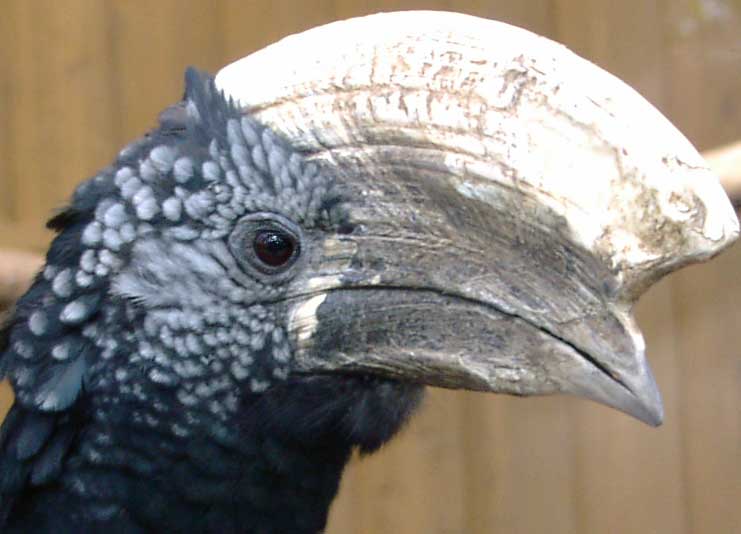|
| Query: John white | Result: 1473rd of 1650 | |
Silvery-cheeked Hornbill (Bycanistes brevis) - Wiki
| Subject: | Silvery-cheeked Hornbill (Bycanistes brevis) - Wiki
| |

| Resolution: 741x534
File Size: 34868 Bytes
Upload Date: 2007:11:29 10:17:13
|
Silvery-cheeked Hornbill
From Wikipedia, the free encyclopedia
Order: Coraciiformes
Family: Bucerotidae
Synonyms: Ceratogymna brevis
[Photo] Silvery-cheeked Hornbill (Bycanistes brevis). Photo by John feather. URL: http://en.wikipedia.org/wiki/Image:Ceratogymna_brevis_JA.jpg
The Silvery-cheeked Hornbill Bycanistes brevis is a large sized bird, with length from 75 to 80 cm, characterized by a very large creamy casque on the beak, smaller in females. The head is silver-grey and the rest of the plumage is black, except for a broad white stripe on the lower back. The Silverycheeked hornbills are uncommon localized residents of the tall evergreen forests of eastern Africa, from Ethiopia to South Africa. In Zimbabwe they are threatened by habitat destruction. Usually they live in pairs and sometimes roost in flocks of hundreds of individuals. This hornbill feeds on fruits, insects, other birds' eggs and centipedes. They breed in Spring (September and October) and lay clutches of 1 to 3 white eggs, incubated for 40 days. The young remain with both parents for circa 80 days.
http://en.wikipedia.org/wiki/Silvery-cheeked_Hornbill
| The text in this page is based on the copyrighted Wikipedia article shown in above URL. It is used under the GNU Free Documentation License. You may redistribute it, verbatim or modified, providing that you comply with the terms of the GFDL. |
|
^o^
Animal Pictures Archive for smart phones
^o^
|
|